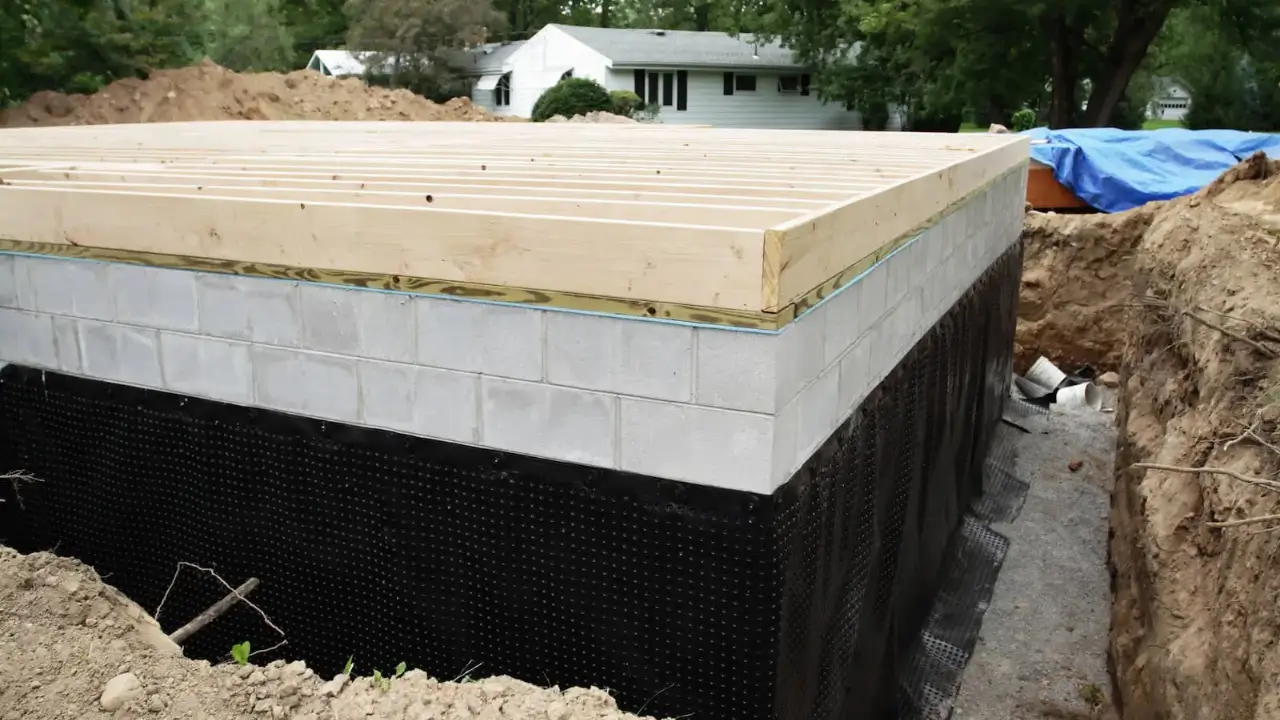
The structural integrity of a building depends not only on the quality of its construction materials but also on its resistance to environmental factors. Among these, water stands as the most persistent and destructive element. Ground moisture, rising water tables, and rainwater infiltration can gradually compromise the foundation of any structure. That’s why below-grade waterproofing is not optional—it’s a fundamental requirement for long-term durability and safety.
So, how is foundation waterproofing performed? Which products are used? When should it be applied? In this guide, we provide comprehensive and technically sound answers to these essential questions.
Why Is Foundation Waterproofing Critical?
The foundation is the load-bearing part of a structure and is in direct contact with the ground. It is the first area exposed to moisture, groundwater, and aggressive soil chemicals. Without proper protection, water infiltration can cause:
- Corrosion of embedded steel reinforcement,
- Loss of concrete strength and structural integrity,
- Persistent damp odors due to high humidity,
- Mold and fungal growth,
- Long-term structural deterioration.
To avoid these risks, waterproofing must be performed at the foundation stage—before the structure is fully built—because once the structure is complete, accessing these areas becomes nearly impossible.
When Should Foundation Waterproofing Be Applied?
Foundation waterproofing should be executed after the foundation excavation and base slab casting but before any vertical structural elements are constructed. Essentially, any surface that will come in contact with the soil must be sealed in advance.
In some projects, a two-stage waterproofing strategy is used:
- Positive Side Waterproofing: Applied on the exterior face of the foundation walls, facing the source of moisture.
- Negative Side Waterproofing: Applied from the interior side when access to the exterior is not feasible. However, this is typically a remedial or temporary solution.
Step-by-Step: How to Waterproof a Foundation
1. Surface Preparation
The substrate must be:
- Clean, dry, and structurally sound,
- Free of dust, laitance, cement residues, or loose particles,
- Smooth and properly leveled.
Where necessary, surface irregularities should be repaired using compatible repair mortars. Substrate preparation directly impacts the performance and longevity of the waterproofing system.
2. Treating Cold Joints, Construction Joints & Expansion Details
Critical areas such as wall-to-slab junctions (cold joints) are prone to movement and leakage. At these points:
- Waterproofing tapes (PVC or TPE-based) are installed,
- Elastomeric sealants or injection systems are used,
- Dryfix DF-PUR Injection 2K, a hydrophobic polyurethane injection resin, is ideal for sealing hairline cracks and active leaks.
3. Primer Application
Primers enhance adhesion between the substrate and the waterproofing membrane. Depending on the system, the appropriate primer is:
- Dryfix DF-PUR 350 Polyurethane Primer – for PU-based systems,
- Dryfix DFC 100 Epoxy Primer – for epoxy or polyurea-based systems.
Allow the primer to dry as per the technical datasheet before proceeding.
4. Application of Waterproofing Membrane
The choice of waterproofing system depends on site conditions and performance expectations. The primary systems include:
a. Bitumen-Based Liquid Membranes
- Cost-effective and easy to apply via brush or roller,
- Provides elastic protection but limited UV resistance,
- Ideal products: Dryfix Bitumer 400 1K / 2K.
b. Cementitious Crystalline Waterproofing
- Reacts with moisture to form water-blocking crystals inside concrete capillaries,
- Suitable for both positive and negative side applications,
- Withstands hydrostatic pressure from groundwater,
- Ideal product: Dryfix Crystallize.
c. Polyurethane Coating Systems
- Highly elastic with excellent crack-bridging capability,
- Resistant to long-term water pressure,
- Can be spray-applied using airless machines,
- Recommended product: Dryfix Water Block.
d. Pure Polyurea Systems
- Applied by hot spray; cures in seconds,
- Provides seamless, fully bonded membranes,
- Offers superior chemical and abrasion resistance,
- Ideal product: Dryfix Polyurea PR – engineered for foundation and retaining wall applications.
5. Protective Layers
After the waterproofing membrane is applied, it must be shielded against mechanical damage:
- Protective concrete screed (blinding layer),
- Drainage boards or geotextile fabrics,
- Protection panels prior to backfilling to prevent membrane puncture.
These protective measures are especially crucial before backfilling, which may otherwise damage the membrane.
Integrating a Drainage System
Waterproofing alone is not sufficient. Hydrostatic water must be redirected away from the structure. For this:
- Perforated drainage pipes are installed around the foundation perimeter,
- Pipes are wrapped with geotextile fabric to prevent clogging,
- The system connects to manholes or stormwater discharge lines.
This significantly reduces hydrostatic pressure on foundation walls.
Product Recommendation Table
| Site Condition | Recommended System |
|---|---|
| Slightly damp soil | Bitumen-based membranes |
| Constant water exposure | Polyurea or polyurethane |
| High groundwater table | Crystalline cementitious coating |
| Budget-friendly solutions | Bitumer 400 1K / 2K |
| Large-scale engineering | Dryfix Polyurea PR or Water Block systems |
Common Mistakes in Foundation Waterproofing
- Skipping substrate preparation,
- Ignoring recoat intervals between layers,
- Applying insufficient thickness (single coat),
- Failing to install drainage systems,
- Disregarding the manufacturer’s technical guidelines.
These oversights often lead to system failure and water ingress within a few months or years.
Foundation waterproofing is the first and most crucial line of defense in any structure. With the correct choice of materials, precise application techniques, and detail-oriented execution, building longevity is enhanced and long-term maintenance costs are minimized. For areas exposed to high groundwater or constant moisture, polyurethane or polyurea systems offer the most robust, long-lasting protection.
If you’re seeking 100% waterproof protection for your foundation slabs and retaining walls, discover the advanced waterproofing solutions from Dryfix. With the right products, expert guidance, and technical support, you can secure your structure from the ground up.
